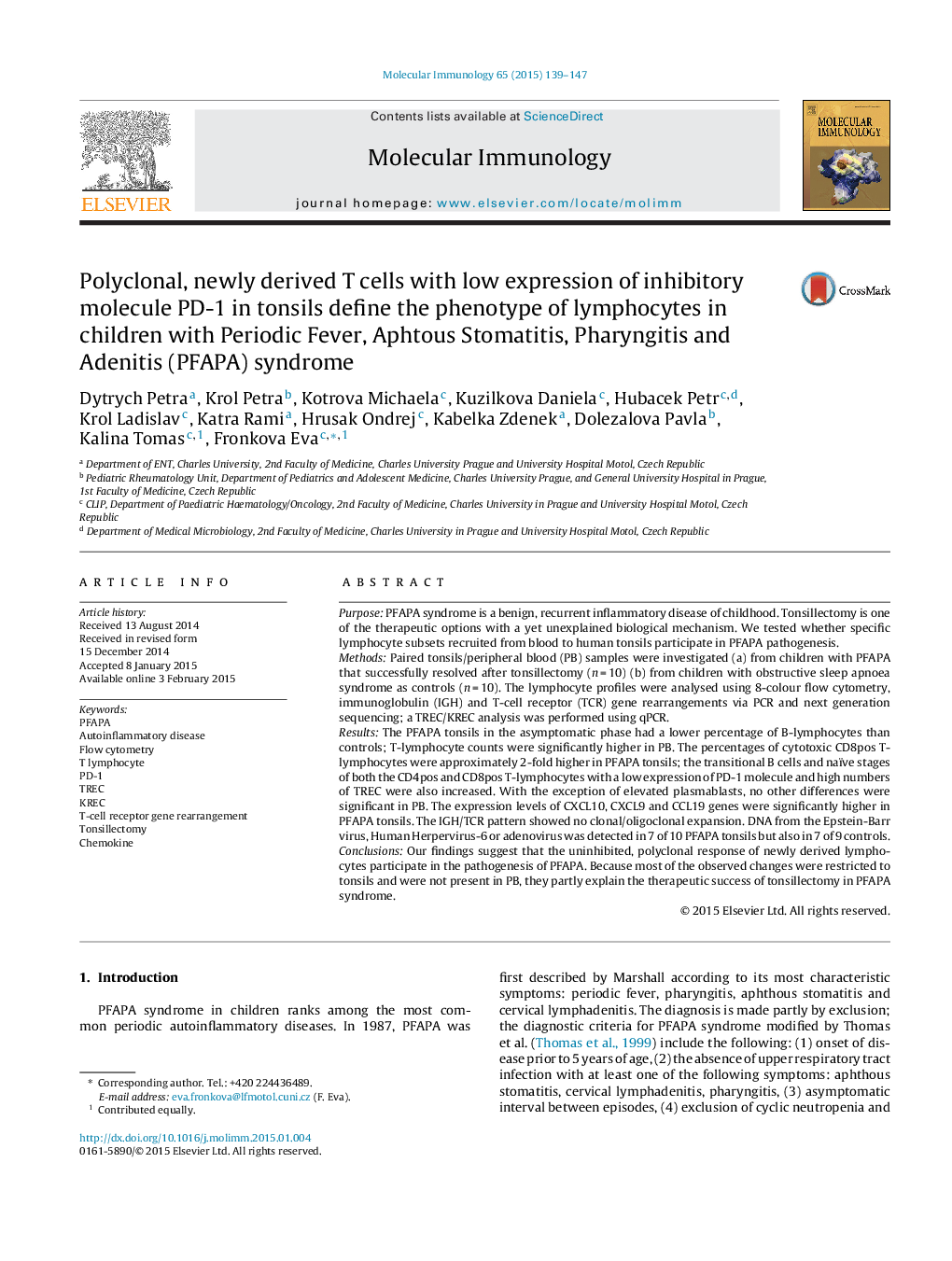| Article ID | Journal | Published Year | Pages | File Type |
|---|---|---|---|---|
| 2830635 | Molecular Immunology | 2015 | 9 Pages |
•The numbers of cytotoxic CD8pos T-lymphocytes were approximately 2-fold higher in PFAPA tonsils.•The naive stages of both the CD4pos and CD8pos T-lymphocytes were increased in PFAPA tonsils.•Low CD4posPD-1highT cells + high CD8posT cells in tonsils define PFAPA phenotype.•PFAPA tonsils had higher expression of CXCL9, CXCL10 and CCL19 genes than controls.•Most of the observed changes were restricted to tonsils and were not present in PB.
PurposePFAPA syndrome is a benign, recurrent inflammatory disease of childhood. Tonsillectomy is one of the therapeutic options with a yet unexplained biological mechanism. We tested whether specific lymphocyte subsets recruited from blood to human tonsils participate in PFAPA pathogenesis.MethodsPaired tonsils/peripheral blood (PB) samples were investigated (a) from children with PFAPA that successfully resolved after tonsillectomy (n = 10) (b) from children with obstructive sleep apnoea syndrome as controls (n = 10). The lymphocyte profiles were analysed using 8-colour flow cytometry, immunoglobulin (IGH) and T-cell receptor (TCR) gene rearrangements via PCR and next generation sequencing; a TREC/KREC analysis was performed using qPCR.ResultsThe PFAPA tonsils in the asymptomatic phase had a lower percentage of B-lymphocytes than controls; T-lymphocyte counts were significantly higher in PB. The percentages of cytotoxic CD8pos T-lymphocytes were approximately 2-fold higher in PFAPA tonsils; the transitional B cells and naïve stages of both the CD4pos and CD8pos T-lymphocytes with a low expression of PD-1 molecule and high numbers of TREC were also increased. With the exception of elevated plasmablasts, no other differences were significant in PB. The expression levels of CXCL10, CXCL9 and CCL19 genes were significantly higher in PFAPA tonsils. The IGH/TCR pattern showed no clonal/oligoclonal expansion. DNA from the Epstein-Barr virus, Human Herpervirus-6 or adenovirus was detected in 7 of 10 PFAPA tonsils but also in 7 of 9 controls.ConclusionsOur findings suggest that the uninhibited, polyclonal response of newly derived lymphocytes participate in the pathogenesis of PFAPA. Because most of the observed changes were restricted to tonsils and were not present in PB, they partly explain the therapeutic success of tonsillectomy in PFAPA syndrome.
